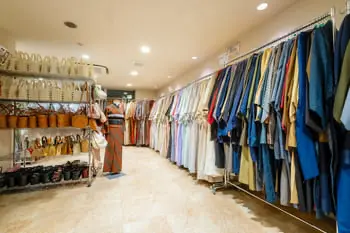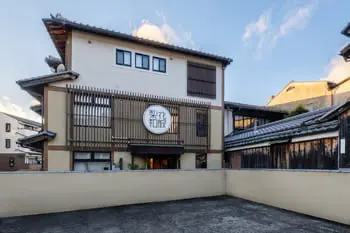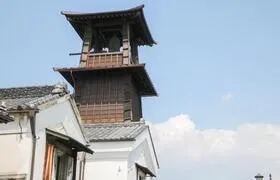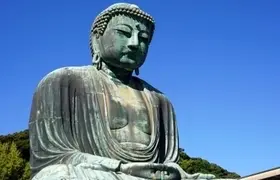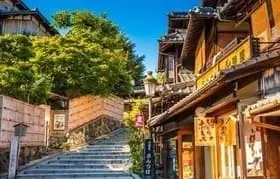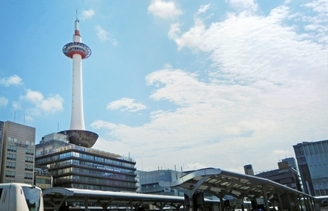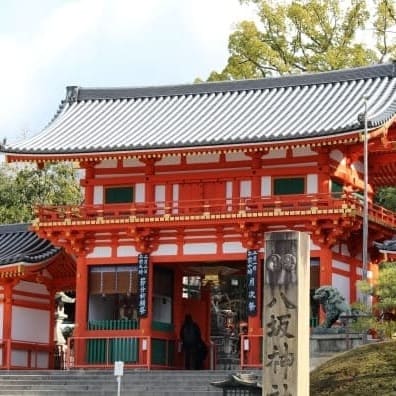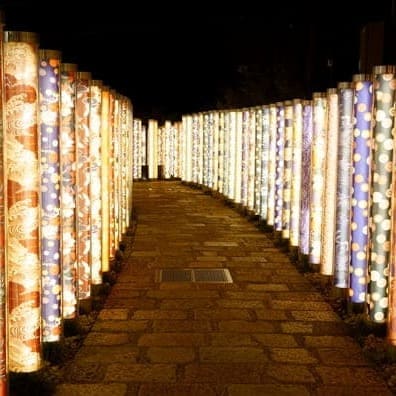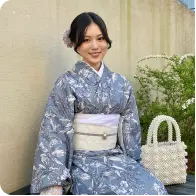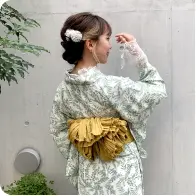Introduction to the history of Kyoto kimono

Kimonos that have garnered attention worldwide are the historic traditional attire of Japan, primarily spread in and around Kyoto. Kyoto has been at the heart of this kimono culture and is considered its birthplace.
What kind of historical changes have shaped Kyoto’s kimono culture, and what charming and historic kimonos have taken root in Kyoto?
History of Japan’s Kimono Culture Started in Kyoto
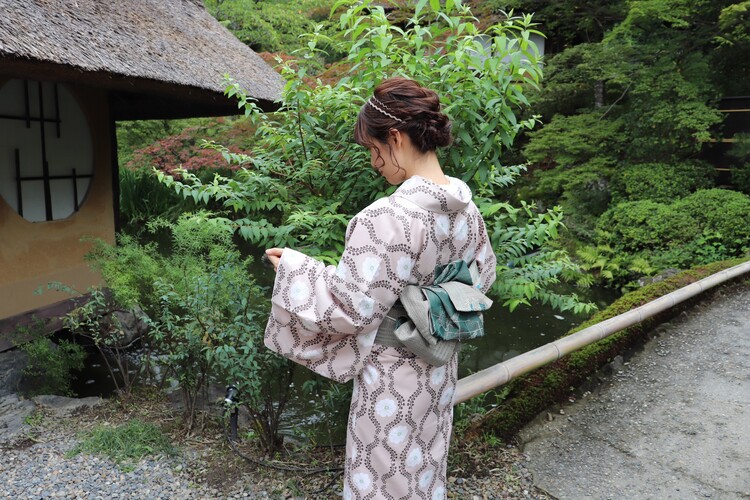
History and Evolution of Kimono Culture in Ancient Times
Japan’s clothing history began with the Jomon period, where people wrapped themselves in cloth and tied it with strings, known as “kanpui” or “kantou-ishi” where a hole was made in the middle of the cloth for the head to pass through.
Around the Asuka period, clothing influenced by the continent started to be worn, although it was not suitable for Japan’s climate and gradually evolved. In the Heian period, noblewomen began wearing “juunihitoe,” which consisted of layers of wide-sleeved “hitoe,” “itsutsuginu,” “uchigi,” and more.
Juunihitoe, with its wide sleeves and broad front panels, was unique to Japan and, despite differences in how it was worn and its shape, served as the prototype for the kimono that continues to this day.
As the Heian period ended and the warrior society emerged, the heavy and cumbersome juunihitoe declined in popularity, making way for “kosode” with shorter sleeves, which were more practical.
Did the Onin War Trigger the Spread of Kimono Culture Nationwide?
In the later Muromachi period, the dispute over the succession of the 8th Shogun, Ashikaga Yoshimasa, led to the outbreak of the “Onin War.”
The Onin War, which engulfed Kyoto in flames, caused many residents to flee Kyoto and artisans specializing in silk weaving and dyeing to scatter across the country. It is believed that the techniques and methods of weaving and dyeing spread during this time.
Although the Onin War lasted for about 11 years, once the conflict ended, artisans returned to Kyoto and resumed their textile businesses, particularly in the area that was the Western Army’s camp. This marked the beginning of “Nishijin Textiles,” which continues to this day.
The Foundation of Modern Kimono Culture is in the Edo Period
In the Kamakura period, Muromachi period, and Sengoku period, the “kosode” was worn, which has a similar shape to today’s kimono. However, as the name suggests, it had shorter sleeves, and it did not require the intricate “ohashori” fold seen in modern kimono.
Another significant feature of this era was that there were hardly any shape differences between men’s and women’s clothing.
During the Edo period, there was a growing emphasis on “beauty” and “elegance” in kosode. One notable change, especially in women’s attire, was the introduction of the “furisode” during the Edo period.
During the Edo period, strict regulations on clothing materials and colors were imposed based on social classes. To satisfy their sense of fashion, various shades of gray known as “hyakushu-iro” and a wide variety of patterns were created.
As a result, the foundations of today’s kimono culture, including color patterns, ways of wearing, and shapes, were established during the Edo period.
Distinctive Kimonos in Kyoto: What Types of Kimonos Are There? Introducing Their Charms and History
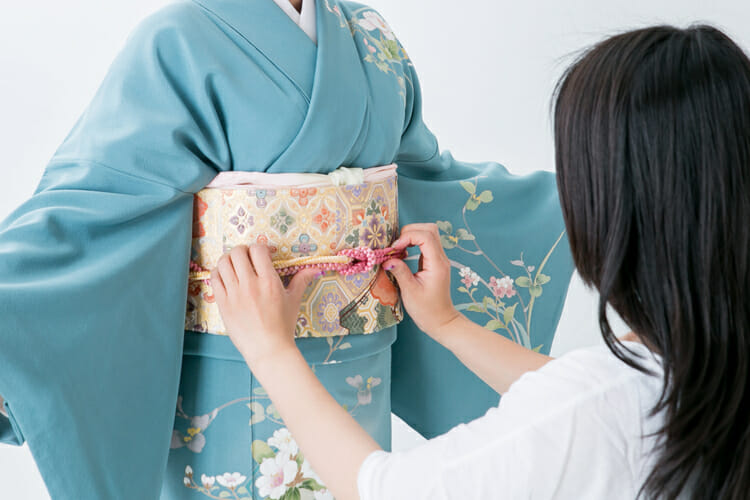
There are various types of kimonos, each with unique regional techniques and characteristics, such as “Kaga Yuzen,” “Oshima Tsumugi,” and “Edo Komon.” What types of famous kimonos specific to Kyoto exist?
Nishijin Textiles
After the conclusion of the Onin War, “Nishijin Textiles” began to be produced in the former Western Army’s camp. Nishijin textiles include a wide range of pre-dyed woven fabrics created using techniques such as glamorous “tsuzure” weaving, satin (“donsu”) weaving, and simple yet charming “kasuri” weaving using multiple colors.
With delicate patterns and a unique sheen that surpasses the results of post-dyeing, Nishijin textile obis, often featuring gold and silver threads, are regarded as “wearable works of art.”
Kyoto Yuzen
Yuzen is a dyeing technique in which drawings are made on plain white silk fabric. It is collectively referred to as the “Three Great Yuzen” when including Kyoto Yuzen, Kaga Yuzen, and Tokyo Yuzen.
Kyoto Yuzen is said to have originated in the late 17th century when a folding fan artist named Miyazaki Yuzensai began creating dye patterns for kosode in front of Kyoto’s Kennin-ji Temple.
Kyoto Yuzen, considered the originator of all Yuzen dyeing, is characterized by its elegant and soft colors, as well as its refined classical patterns.
Kyoto Komon
The term “komon” refers to kimonos with the same pattern repeated all over the fabric. In Kyoto, it is said that Kyoto Komon, which uses stencil patterns, has been produced for about 1,200 years.
Influenced by Kyoto Yuzen, Kyoto Komon features multi-colored, artistic patterns. Compared to solid-colored komon produced in other regions, Kyoto Komon exudes a unique charm and elegance that is synonymous with Kyoto.
Kyoto Kagari Shibori
“Kagari Shibori” is one of the tie-dyeing techniques, where the fabric is tied with threads before dyeing, and the resulting pattern resembles the back of a deer, hence the name “Kagari Shibori.”
Among Kagari Shibori, silk Kagari Shibori created in Kyoto is known as “Kyoto Kagari Shibori.” Due to its intricate craftsmanship, it is treated as a luxury item.
Continuously Developing Traditional Crafts
Nishijin-ori, Kyoto Yuzen, Kyoto Komon, and Kyoto Kanoko Shibori are all designated as traditional crafts, preserving ancient techniques and traditional patterns into the present day.
However, on the other hand, they also incorporate technologies like digital dyeing and computer-based design, continuing to evolve with the times.
If you’re interested in learning about “Kimono shops” that handle various types of kimono, you can find more information here: What Are Kimono Shops Like? Insights from Kyoto’s Traditional Kimono Stores
For Enjoying Kimono in Kyoto, Rental Is Recommended
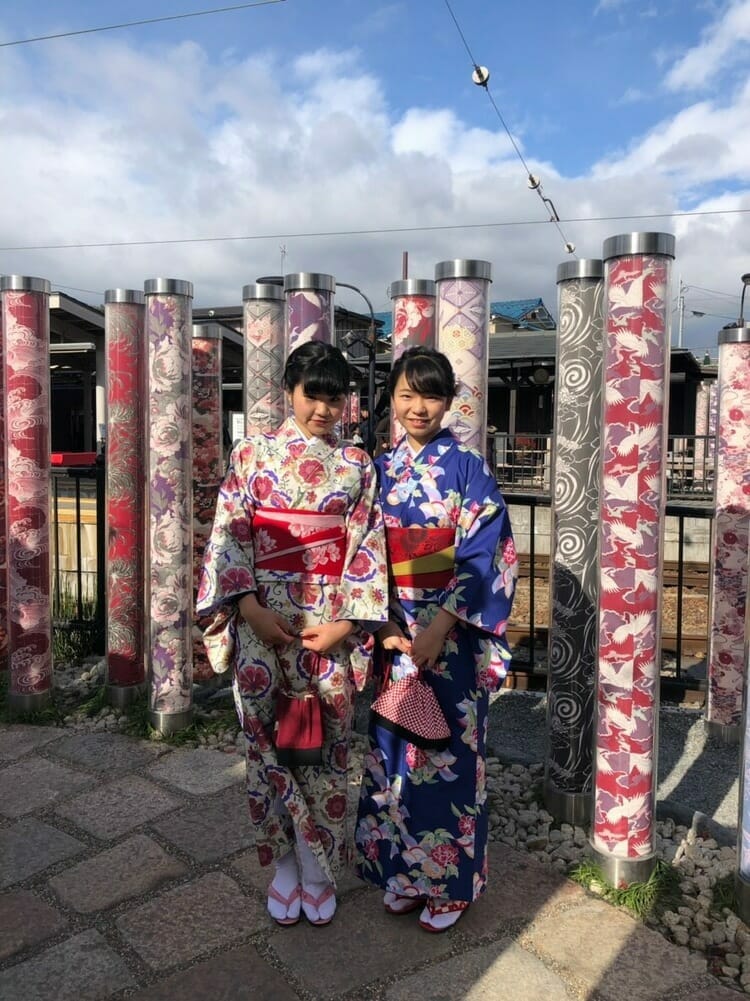
Even if you want to wear Kyoto-style kimono, buying one can be a significant financial burden, and the effort of storage for infrequent use may deter you.
If you cannot dress yourself, or find it cumbersome to gather kimono dressing accessories and small items, why not consider using Rika Kimono Rental in Kyoto? It allows you to easily enjoy high-quality kimonos that are not easily accessible for individuals.
The Foundation of Modern Kimono Culture Dates Back to the Edo Period
During the Edo period (17th to 19th century), Japan experienced a peaceful era, and kimono became common even among commoners.
As the Edo period progressed, merchants and townspeople began to seek luxury and stylish cultural experiences, which also influenced kimono culture.
Furthermore, during the Edo period, the value of “wearing kimono is appreciating the beauty of Japan” became deeply rooted, and the beauty of kimono was highly appreciated. This era gave birth to and developed a wide variety of kimonos.
By the late Edo period, “Ukiyo-e” (woodblock prints) became popular, and kimonos were even considered part of art and fine arts. As a result, colorful and beautiful patterns and designs emerged, loved by many.
Kyoto-Specific Kimono: What Types Are There? Introducing Their Charms and History
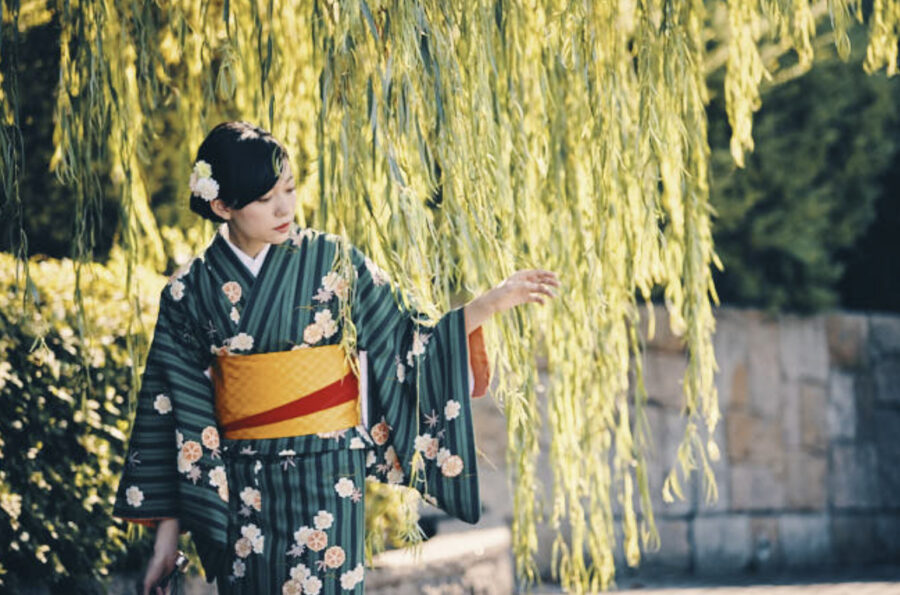
Nishijin-Ori
Nishijin-Ori is one of Kyoto’s representative traditional weaving techniques, dating back to the Heian period. It originated in the Nishijin area of Kyoto, where numerous weaving workshops were established.
Nishijin-Ori is known for its beautiful patterns, colors, and intricate designs. It is often used for formal kimono like furisode (long-sleeved kimono) and visiting wear. High-quality Nishijin-Ori kimono is considered suitable for occasions like weddings and coming-of-age ceremonies.
Kyoyuzen
Kyoyuzen (京友禅) is a dyeing technique that originated in Kyoto, creating beautiful patterns through hand-drawing. Yuzen dyeing is used for formal kimono such as furisode (long-sleeved kimono) and visiting wear.
The distinctive features of Kyoyuzen are its vibrant dyes and intricate patterns. It often incorporates themes of seasons, landscapes, and the beauty of nature, making its designs highly valued as works of art.
Kyokomon
Kyokomon (京小紋) refers to kimono that are worn as everyday attire and are not necessarily highly formal. They are characterized by simple patterns and designs. Komon typically feature single colors or woven patterns, showcasing refined simplicity.
Kyokomon is widely cherished as daily wear, suitable for casual occasions as well as more formal settings.
Kyoshika-no-ko Shibori
Kyoshika-no-ko Shibori (京鹿の子絞り) is a dyeing technique known for its unique shibo (crepe) patterns. These patterns resemble small fawns’ spots, creating a detailed and elegant impression.
While shika-no-ko Shibori may have relatively simple designs, its refinement and sophistication make it suitable for a wide range of occasions, from everyday wear to formal events.
Continuously Evolving Traditional Crafts
These traditional kimono techniques are indispensable to Kyoto’s kimono culture and continue to receive high praise in modern times. Many artisans preserve tradition while creating new designs and patterns, spreading the charm of kimono.
Author of this article
Kimono Rental RikaWafuku in kyoto operates four kimono rental shops in Kyoto city, including locations in Arashiyama, Gion, Kiyomizu Temple, and in front of Kyoto Station. In 2023, they served over 230,000 customers in the Kyoto area!
They offer affordable plans, with a kimono dressing plan starting from 3,500 yen, and a hair setting plan from 5,500 yen.
Close to popular tourist spots such as Togetsukyo Bridge, Kiyomizu Temple, Yasaka Koshindo, and Yasaka Shrine!
Kyoto Kimono Rental Rika Wafuku
Kimono Rental Rika Wafuku Gion Store
Kimono Rental Rika Wafuku Arashiyama Store
Kimono Rental Rika Wafuku Kiyomizu Temple Store
Kimono Rental Rika Wafuku Kyoto Station Front Store

